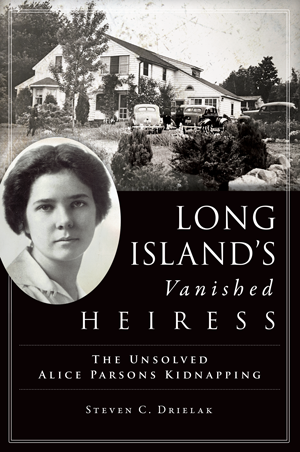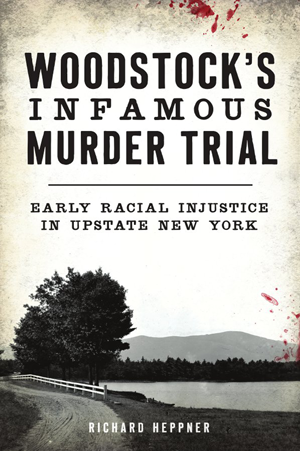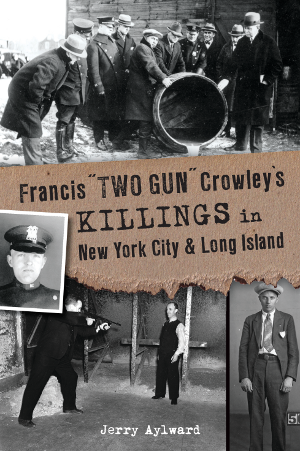
Cat and mouse. Hunter and hunted. Chess and—checkers?
Long Island, 1937. For months, the wealthy heiress Alice Parsons has been missing from her rural estate of Long Meadow Farm ever since she got into a car one morning to go check on a neighbor and was never seen again. With Alice now feared dead, her husband, William Parsons, is distraught; her housekeeper, Anna Kupryanova, is a chief suspect, though law enforcement hasn’t been able to do much more than catch her in a handful of lies, lies out of which she always seems to wriggle.
With indications pointing increasingly to Kupryanova’s involvement—conflicting alibis, vanishing evidence, and wiretapped conversations—FBI Inspector E.J. Connelly realizes that the kind of pressure that police have been exerting simply hasn’t been working. He needs another angle, another way to crack the case open. And as author Steven C. Drielak—who worked directly on the case as a forensic specialist—tells in his book Long Island’s Vanished Heiress: The Unsolved Alice Parsons Kidnapping, Connelly comes up with a most unusual plan.

As we’ve see on Crime Capsule before, with every celebrity case (such as the Lindbergh baby kidnapping, or the murder of the Grimes Sisters) cranks and nutjobs come crawling out of the woodwork. Usually, bogus tips and attention-seeking claims impede the work of law enforcement, but in this case Inspector Connelly saw an opportunity. With a ransom note from one Paul Jones appearing at Long Meadow Farm in July 1937—a note of dubious origin at best—Connelly realized he could use this letter as bait for the suspect housekeeper.
In a bold move, Connelly devised a fictional sister for Paul Jones, and began writing additional letters to Kupryanova in their guise. Alongside her brother Paul, this ‘Mary Jones’ was, in effect, a kidnapper that didn’t exist—but who, in Connelly’s hand, hinted that she had new knowledge of the case. Adding extra sheets of blank paper marked with special invisible ink to the letters, Connelly had these sent to Kupryanova, hoping that this ruse would induce her into revealing the location of Parsons’ body. After all, as Kupryanova herself had maintained, “If there is no body, there is no murder.”


Curiously, the bait worked, but not quite in the way that the FBI had hoped. In a bizarre twist, Kupryanova took the blank sheets and began writing her own letters as Mary, addressing them back to herself and having them mailed through a third-party. Lab analysis of the paper showed that she had, indeed, used Connelly’s own paper supply; over eight letters sent that July and August, Kupryanova and Connelly both took on Mary’s persona, both dancing around the central question of the case: just where was Alice’s body? Each letter teased new details, but none could be confirmed in any meaningful way—akin to two chess players pushing their pieces around the board but never quite reaching checkmate.
With Parsons—who was, by now, understood to be her lover, adding a new layer of motive to the case—set to move away from Long Island that September, she made plans to join him, and in the absence of any new evidence the entire FBI investigation had to be uprooted and moved to California. The trail of fake Jones letters ceased as a result, given both its lack of results and the disruption of the relocation. Worse still, as Drielak details, the case took a drastic downward turn in California when federal agents bungled an operation to tail the two suspects that winter, not just being discovered but losing sight of the pair at a key juncture, effectively ending any chance at further surveillance.
Explore a murderer’s intricate web of lies in Long Island’s Vanished Heiress
Every indication now pointed to Parsons’ and Kupryanova’s conspiracy to kill Alice, and to claim her inheritance for themselves. But one way to win a game, of course, is to run out the clock, which is precisely what they did. With Alice’s body never found, the state of New York and Suffolk County were forced to declare her legally dead, but despite the extensive web of lies and the months of contradictions in testimony, no case could ever be brought against her husband or her housekeeper. Even today, her remains have never been found. We’ll let Drielak have the last word:
“The yearlong FBI investigation into the disappearance and murder of Alice Parsons brings to mind an old adage used to describe mismatched adversaries. That adage describes one adversary as playing chess, while the other adversary is playing checkers. In the case involving the disappearance and murder of Alice Parsons, both Inspector E.J. Connelly and Anna Kupryanova were playing chess—and Anna Kupryanova won.”
Looking for more to read during quarantine? Check out our quaran-reads here. Finding us for the first time, and want to learn more about what we do? Visit our welcome page and sign up for the Crime Capsule email newsletter. See you behind bars!






